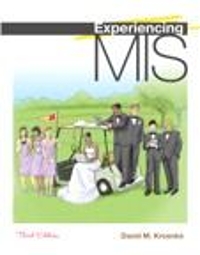Reread the Guide on pages 114115. Suppose you are given the task of converting the salespersons data
Question:
Reread the Guide on pages 114–115. Suppose you are given the task of converting the salesperson’s data into a database. Because his data are so poorly structured, it will be a challenge, as you will see.
a. Download the Excel file named Ex23 from www.pearsonhighered.com/kroenke. This spreadsheet contains data that fit the salesperson’s description in the Guide. Open the spreadsheet and view the data.
b. Download the Access file with the same name, Ex23. Open the database, select Database Tools, and click Relationships. Examine the four tables and their relationships.
c. Somehow, you have to transform the data in the spreadsheet into the table structure in the database. Because so little discipline was shown when creating the spreadsheet, this will be a labor-intensive task. To begin, import the spreadsheet data into a new table in the database;
call that table Sheet1 or some other name.
d. Copy the Name data in Sheet1 onto the clipboard.
Then, open the Customer table and paste the column of name data into that table.
e. Unfortunately, the task becomes messy at this point. You can copy the Car Interests column into Make or Model of Auto, but then you will need to straighten out the values by hand.
Phone numbers will need to be copied one at a time.
f. Open the Customer form and manually add any remaining data from the spreadsheet into each customer record. Connect the customer to his or her auto interests.
g. The data in the finished database are much more structured than the data in the spreadsheet.
Explain why this is both an advantage and a disadvantage. Under what circumstances is the database more appropriate? Less appropriate?
Step by Step Answer:






